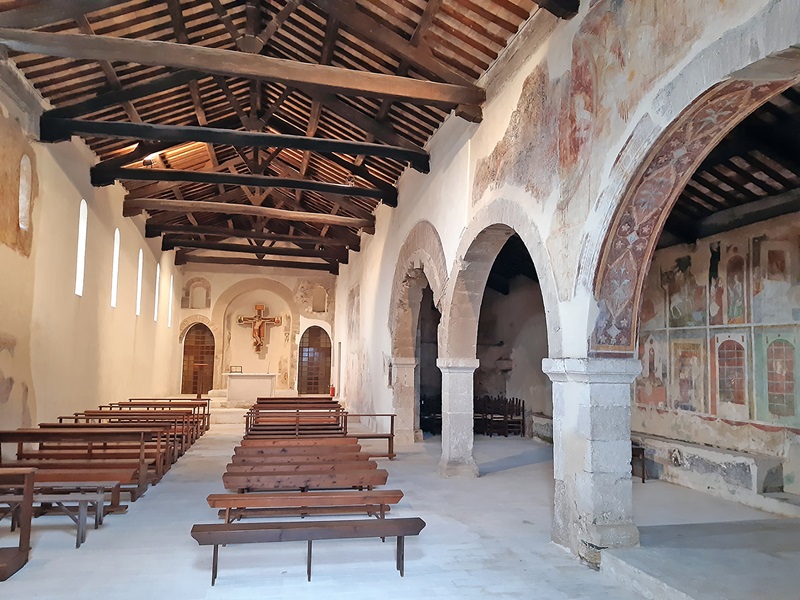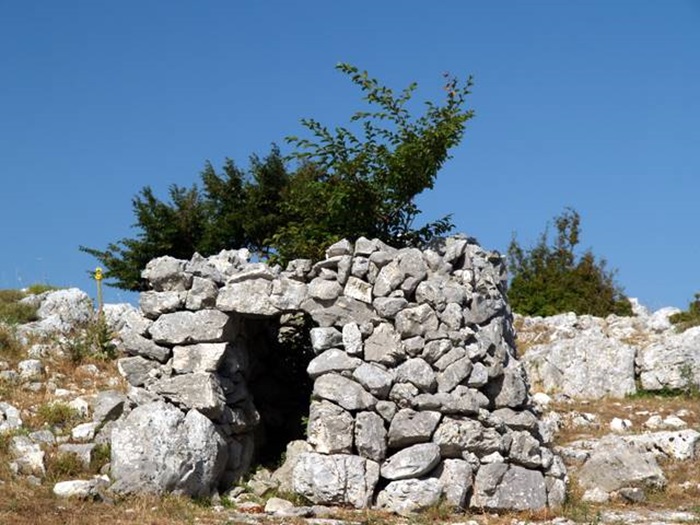Resting on a hill overlooking the last stretch of the Liri Valley, San Vittore del Lazio is the final stage of the Southern Via Francigena in Lazio, direction Prenestina Casilina, at the border with Campania and Molise.

The frescoes in the Church of San Nicola in San Vittore del Lazio – Photo @cdsconlus.it
The historic centre is surrounded by the ruins of medieval walls, with openings from where to admire the view of the Mainarde and the Aurunci Mountains. The highlight in San Vittore is the Church of San Nicola, restored in 2022, with its stratifications of frescoes dating back to the year 1000, and the noteworthy fourteenth-century pictorial cycles, portraying the merciful acts and the martyrdom of Santa Margherita d’Antiochia.
Another important church is Santa Maria della Rosa, several times rebuilt, with its beautiful pulpit decorated with sculptures and mosaics, and its bell tower at the centre of the facade.

Remains of a Samnite settlement in San Vittore del Lazio – photo @comunesenvittoredellazio.fr.it
The village preserves numerous pre-Roman remains, such as the walls of a Samnite settlement on the slopes of Mount Sammucro, probably Aquilonia, destroyed in the third century BC.

Christmas Tree on a side of mount Sammucro in San Vittore del Lazio
Every year, on a side of Mount Sammucro, a Christmas tree is set up with thousands of lamps, lit from December 8 (the Immaculate Conception Day) to January 6 (the Epiphany) to create a warm, festive atmosphere every night.

Albero da Guinness a San Vittore del Lazio FR – Facebook @Albero di San Vittore
The bright 610 metres tall tree, visible from the Autostrada del Sole, entered the “Guinness Book of Records” in 2002, a recognition awarded by the prestigious company “Guinness World Records” from London.
At Christmas time, a handmade oakwood nativity scene is also displayed in the village, attracting visitors from everywhere. The artwork is created by the local craftsmen Fernando Cappola and his son Carlo, who, throughout the year, carve with patience and skill the pieces of wood they collect in the woods.
The local cuisine of peasant origins, typical from Ciociaria, includes ricotta cheese and the tripe from San Vittore.
